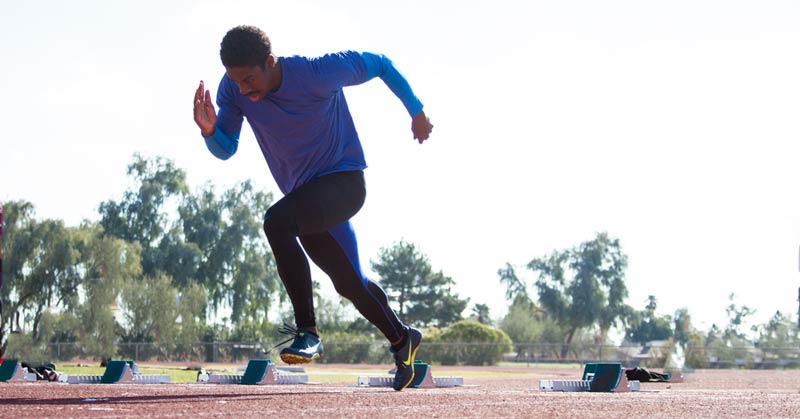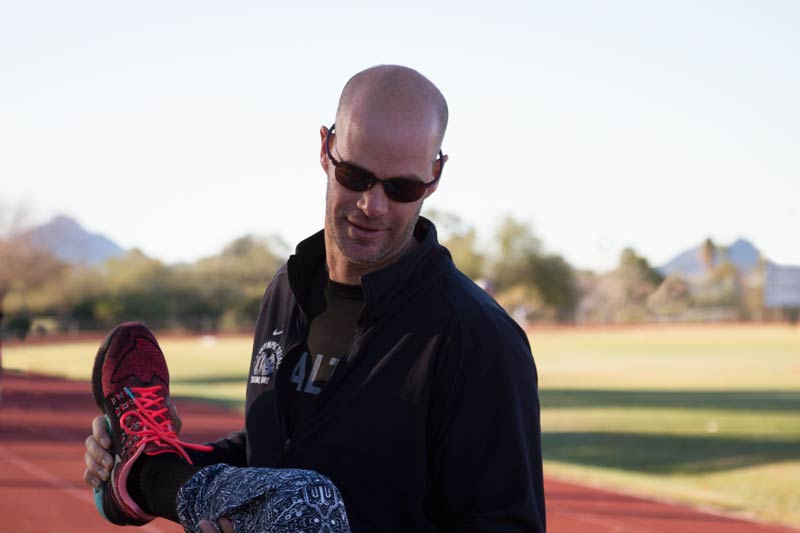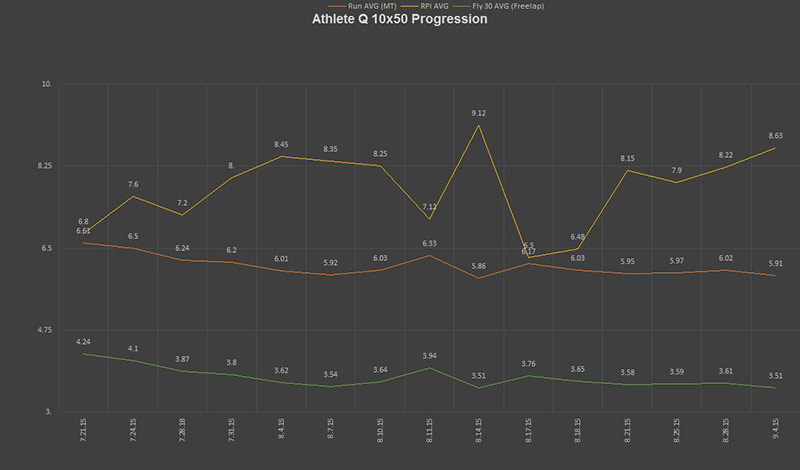[mashshare]


In my previous post, Returning to Play the Altis Way, I discussed five major principles that contribute to an effective return to competition for injured athletes.
These principles are:
- Gathering Information
- Having Entire Performance Staff on the Same Page
- Keeping Training Gaps Small
- Using Landmarks not Timelines
- Providing Quality Therapy Inputs
Each of these five components shares equal importance in determining the desired outcome for the athlete. I do not think it is possible to say that in all situations one component is more valuable than the other; however, the lack of any component can undermine the entire process. Therefore, we strive to execute each component with the utmost quality. As you may have read in my previous posts concerning the debrief process, we have a detailed and structured debrief system that we implement on a daily basis – as well as post-competition and post-season. This debrief process aids us in Gathering Information. We have also sought out and hired a therapy team that we are confident delivers very high Quality Therapy Inputs to our athlete population on a daily basis.
We are dealing with people and emotions, and everyone is striving for the well-being of the athlete. Share on XIn the same sense, we are always looking for quality technologies that can aid us in all aspects of training, but especially in the High Performance and Return to Play realms. In this post, I will outline a case study for an athlete involved in our return to play procedures, and how we utilized a Freelap timing system to monitor Training Gaps and to track Landmarks. It’s a difficult undertaking to present an accurate and detailed case-study that covers all of the moving pieces, but I will attempt to do so in a way that is organized and provides real-world examples of how the above five principles were put into action. In each realm, we are dealing with people and emotions, and everyone is striving for the well-being of the athlete. Sometimes the best-laid plans go awry, and adjustments are made on the fly. This is the true art of coaching in my opinion. Whenever the human element is involved, there is a delicate balance that needs to be upheld. Teaching moments are critical, and often ‘Return to Play’ (RTP) situations provide the opportunity for some “Come to Jesus” meetings that can get to the heart of underlying issues.
Case Background (Gathering Information)
Before we can get to the heart and soul of this post, it’s important that the reader has some context about how we reached a point in the RTP process where we could utilize the Freelap system. The athlete is a female jumper that we will call Athlete Q. Athlete Q (henceforth known as AQ) suffered from a difficult-to-treat chronic injury puzzle. The athlete had radicular pain, a functionally short leg, severely reduced power output, and a myriad of compensation schemes that changed depending on the presentation of the day. While debriefing AQ, it was discovered that the initial injury occurred close to the end of the previous season (before joining ALTIS), received little to no therapy inputs, and competed a number of times with big training gaps between competitions. These competitions were unsuccessful, and stress levels were exceedingly high as emotional batteries were drained. Upon conclusion of that season, AQ took complete rest. Initial training the following season started off very well, but once intensity was increased, the same pain loops returned. The therapy team began providing inputs in a what else, where else fashion to try and track down the culprit, or collusion of culprits, that prevented proper healing. Through the excellent work of talented therapists, a management strategy was developed which provided relief and improved training quality. This enabled AQ to compete and train in moderation.

However, power output was still reduced from optimum, and most of the competitive season was lost. After communication within AQ’s performance staff, the decision was made to investigate a PRP injection at the hands of a skilled practitioner through the ALTIS network. Ultrasound images showed that PRP was indeed a viable option, and a procedure was completed immediately upon completion of the season. The procedure went smoothly, and the next phase of the return to play process began.
Post Procedure Strategy
The days immediately following a procedure can have a huge impact on the outcome. Below, I will lay out in detail the process that was followed as AQ moved from a period of complete rest to high-intensity sprinting. Please note that the information below is given in chronological order because that is the simplest way to share it. However the principle of Landmarks over Timelines was used, and when possible, the Movement Landmark that was achieved will be described. The performance team coordinated effectively with all doctors and therapists involved. A post-procedure strategy was developed with inputs from each party. Coach Dan Pfaff served as the gatekeeper, and guided AQ forward based off our RTP principles.
Please see the detailed execution of strategy below with notes as taken through the process.
Day 1-5
Complete Rest – PRP incubation period as prescribed by a physician and agreed with by performance staff.
Day 6-15
During this period, AQ trained every other day. The training emphasis was on slow and controlled movements in efficient movement patterns to begin motor re-education and create appropriate brain maps. This is necessary due to the numerous compensation patterns that elite athletes can develop when in chronic injury situations. All activity was low intensity, light jogging was allowed, and bike workouts were permissible as long as no local tenderness was felt.
Training days consisted of:
- Walking Warm Up – emphasis on motor re-education – mindfulness!
- No accelerations at end of warm up
- Single Leg Multiple Jumps on Healthy Leg
- Controlled Movement General Strength Circuits
- Bike Workouts
Day 16 – 20
Upon the completion of Day 15, it was observed that AQ was able to complete the regular warmup in a walking fashion with efficient movement patterns and no pain (landmark). No pain was reported by AQ in any other area of training. Therapy inputs consisted of general flush massages, but no direct work was done on the site of the procedure. Based off this information, the decision was made to advance to the next series of landmarks in our RTP process. AQ gradually increased intensity to 60-70% while controlling knee extension on all drills and running. Fatigue and soreness were monitored strictly through daily athlete debriefs (pre-session, peri-session, post session). Weight-room activities resumed with heavy single-leg snatch. Light to moderate double-leg deadlift – slow and controlled in both contractions – was also added. The rest of the weight-lifting was done normally for that period of the year. A steady-state run building up to 20 minutes was added, and all were governed by posture, form, pain, etc. At the first sign of a breakdown in any of these areas, the activity was stopped.
Training Days consisted of:
Day 16:
- Warm up A at low intensity
- Accelerations at end of warm up at 40-50%
- Acceleration Development
- Dribbles over the ankle 3 x 30, 40, 50
- Multiple Jumps – 5 x 3 x 5 small hurdles w/pause
- Emphasize flat landings and congruent amortization angles
- Strength Training
- Jog Cool Down
Day 17:
- Warm B at low intensity
- Accelerations at end of warm up at 40-50%
- Approach Development x 6-8
- Over the ankle dribbles into low-intensity straight leg bounds
- Speed Development – 6 x 80m ankle/calf dribbles with emphasis on “bounce”
- Multiple Jumps – Rudiment 2 x 20m – done with low amplitude effort
- General Strength and Med Ball Circuits x 1 each
- Jog Cool Down
Day 18:
- Warm Up A at low intensity
- Accelerations at end of warm up at 40-50%
- Bike Workout – fartlek fashion – set seat for proper pelvic posture
- Strength Training
- Jog Cool Down
Day 19:
- Steady run
- AQ was able to run for 11’ before losing posture and form, felt dull ache at IT (Iliotibial)
Day 20:
- Warm Up A – moderate intensity – Accelerations at end of warm up at 50%
- Dribble Accelerations – 4 x 30, 40, 50m
- Multiple Jumps – 5 x 3 x 5 small hurdles w/pause
- Emphasize flat landings and congruent amortization angles
- Strength Training
- Jog Cool Down
Day 21-69:
At the completion of Day 20, it was observed that AQ handled the increase of intensity with no loss of motor control or increase in pain. Movement patterns began to stabilize, but still required a high level of mindfulness. The addition of strength training created normal tension but did not limit movement capacities at the injury site. Therapy inputs reduced tension, and tissue quality was monitored at and around injury location. AQ handled each of these areas well from a mindset perspective; however, there was a feeling of disappointment that the season had come to a close on a low point. Thus, motivation and esteem began to waiver during the redundant portions of the RTP process. This was noted by the staff, and through discussions with the athlete, we decided this was an opportune time to implement the next phase of our RTP strategy.
This phase was highlighted by a 10x50m routine. Starting twice a week – and eventually moving to 3 times a week – AQ would run 10 x 50m. AQ was asked to report the Rate of Perceived Intensity (RPI) for each run. During each session, the RPI was to increase as pain, posture, form allowed. Each session, the goal was to increase the RPI from the session before. A ‘walk-in’ start was used early on to relieve stress on the injury site during the acceleration phase. This gradually progressed to a roll-over start, and eventually to a static start with various depths. Runs were initially done in flats, and eventually, spikes were used.
An integral part of this process was the use of the Freelap timing system. The timing system was set up to record the last 30m of each run. In addition, a coach manually timed the entire 50m of each run. Both times were recorded along with AQ’s RPI for each run. Specifically, AQ was not told either time until the RPI had been reported. At the conclusion of each session, the average was recorded for each metric and given to AQ.
The use of Freelap provided many teaching moments that would not have existed otherwise. First of all, AQ was able to get immediate feedback on the accuracy of the RPI for each run. This led to increasingly accurate abilities of AQ to ‘feel’ the quality or lack of quality for each run. It allowed the coaches to point out errors in the first 20m of the run that may have ‘felt’ fast to the athlete, but created a lack of momentum and thus a slower fly 30m. Overall, the ease of use of the system created a simple and accurate way to track and quantify actual improvements in the maximum velocities handled by AQ over the course of the RTP process.
The value of having an objective way to give feedback on Key Performance Indicators is something that should not be taken lightly, and all coaches would be wise to utilize this type of technology. The feedback from the Freelap system held AQ to a higher level of accountability, fostered more excitement and competitiveness in each session, which led to greater rates of improvement in our opinion. AQ felt that the use of the system allowed her to associate the execution of a KPI (Key Performance Indicator), that otherwise felt foreign and wrong, with a positive outcome; therefore, building increased trust and confidence in the performance team and the RTP process.
The weekly setup during this period is as follows below:
| Day | Setup |
| Monday | Warm Up A – Normal Intensities 4 x 30, 40, 50m – Dribble ankle, calf, knee Later replaced with 10x50m series once AQ ran 8m/s landmark Multiple Jumps – progressing intensities Strength Training Cool Down |
| Tuesday | Warm Up B 10x50m – Freelap MJ – Rudiment GS/MB Circuits Optional Ancillary Lifting Cool down |
| Wednesday | Warm Up A Bike Workout Special End – eventually becoming Special End Up/Backs on the track Strength Training Cool down |
| Thursday | Steady State Run – eventually becoming Fartleks Optional Ancillary Lifting |
| Friday | Warm Up B 10x50m – Freelap Multiple Throws Strength Training Cool Down |
| Saturday | Warm Up B Special Endurance Runs – progressively increasing intensity and rest between runs Hurdle Mobility Optional Ancillary Lifting Cool Down |
| Sunday | Rest, Epsom Salt Bath, Flush Massage |
The chart below tracks AQ’s progress from Day 21-70. During the 4th week of the 10x50m process, the decision was made to add an additional session on Monday. This coincided with the normal increase of training volume in our ‘2 on 1 off’ training scheme. The staff was comfortable with this decision because the Freelap Fly 30 averages had stabilized in a cluster with no negative reports from AQ in regards to injury site or from therapy staff involved in the process. This week also saw a move away from Wednesday Bike workouts to on-the-rack special endurance runs in the form of up-backs (60m acceleration in one direction, deceleration, turn around, 60m back the other direction). These runs were initially completed at low intensity and were purposefully not timed to control arousal level and safeguard intensity following the Monday-Tuesday Sessions.

Several interesting trends emerged over time from the Freelap Data. Often the Friday session was the fastest session of the week. At the beginning of the process, the fastest runs occurred early in the session (Run 3-4), but over time shifted to the latter runs (Run 8-9). It also appears the performance team may have added in the Monday 10×50 session a bit too soon, and in future RTP scenarios will take a hard look at the value of having the session at all versus just dribbling or doing untimed accelerations.
Interestingly, following the completion of the RTP process for AQ, the staff decided to do some baseline testing to see where AQ was leading into the transition time for the next season. AQ ran season bests in Freelap FLY 30, and 45-second run; jumped season bests in Standing Long Jump (also Personal Best), Standing Triple Jump, and threw SBs in Overhead Back and Underhand Forward.
Needless to say, with the success of these results, AQ concluded the RTP process on a high note and felt accomplished going into a much-needed mental and physical rest period prior to beginning training for the following season. The combination of an athlete-centered ‘Return to Play’ process combined with Freelap’s top of the line technology proved to be a highly effective pairing.
For more coach and athlete resources from ALTIS, see ALTIS 360.Since you’re here…
…we have a small favor to ask. More people are reading SimpliFaster than ever, and each week we bring you compelling content from coaches, sport scientists, and physiotherapists who are devoted to building better athletes. Please take a moment to share the articles on social media, engage the authors with questions and comments below, and link to articles when appropriate if you have a blog or participate on forums of related topics. — SF
[mashshare]




